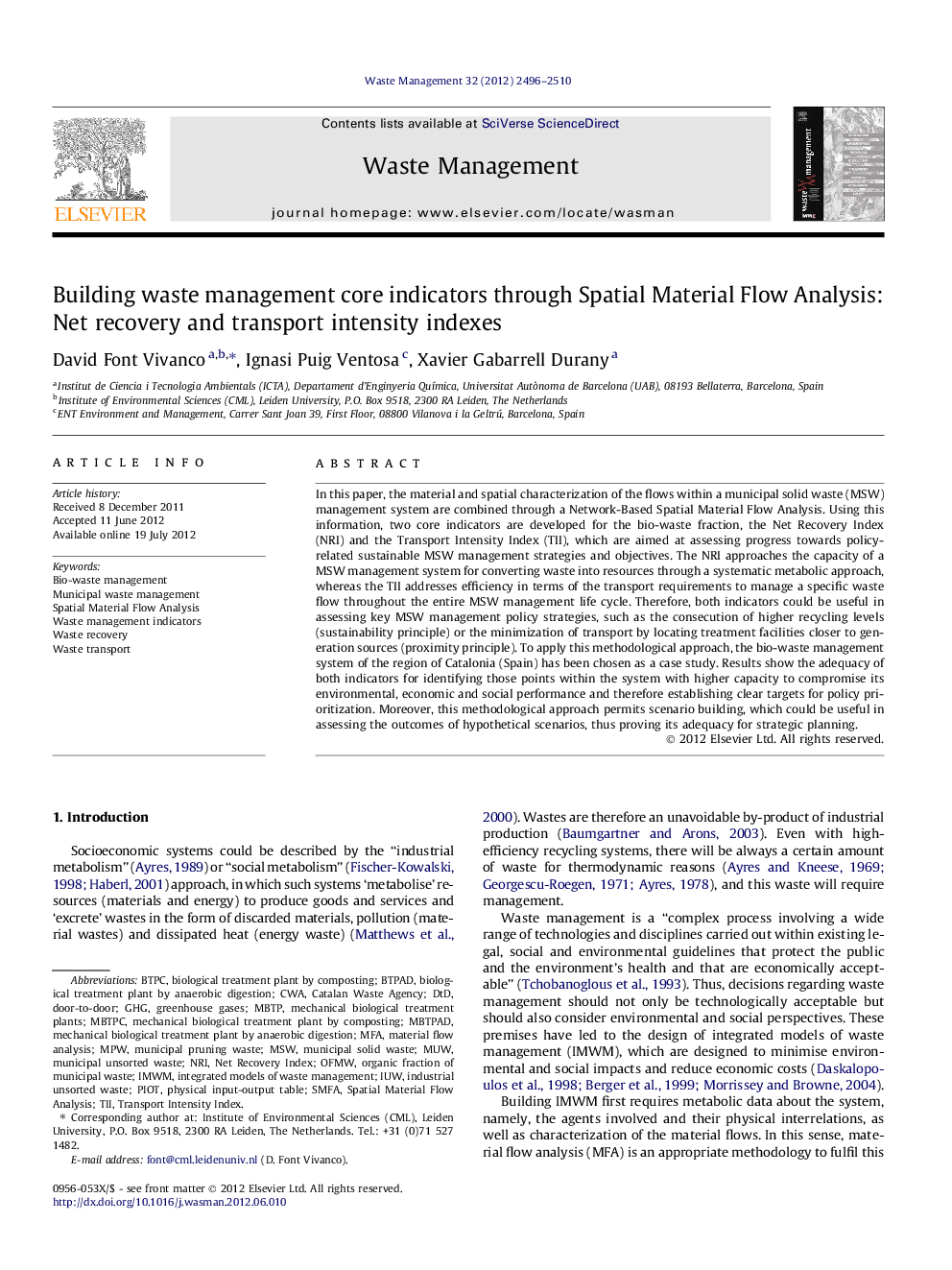| کد مقاله | کد نشریه | سال انتشار | مقاله انگلیسی | نسخه تمام متن |
|---|---|---|---|---|
| 4472226 | 1315061 | 2012 | 15 صفحه PDF | دانلود رایگان |

In this paper, the material and spatial characterization of the flows within a municipal solid waste (MSW) management system are combined through a Network-Based Spatial Material Flow Analysis. Using this information, two core indicators are developed for the bio-waste fraction, the Net Recovery Index (NRI) and the Transport Intensity Index (TII), which are aimed at assessing progress towards policy-related sustainable MSW management strategies and objectives. The NRI approaches the capacity of a MSW management system for converting waste into resources through a systematic metabolic approach, whereas the TII addresses efficiency in terms of the transport requirements to manage a specific waste flow throughout the entire MSW management life cycle. Therefore, both indicators could be useful in assessing key MSW management policy strategies, such as the consecution of higher recycling levels (sustainability principle) or the minimization of transport by locating treatment facilities closer to generation sources (proximity principle). To apply this methodological approach, the bio-waste management system of the region of Catalonia (Spain) has been chosen as a case study. Results show the adequacy of both indicators for identifying those points within the system with higher capacity to compromise its environmental, economic and social performance and therefore establishing clear targets for policy prioritization. Moreover, this methodological approach permits scenario building, which could be useful in assessing the outcomes of hypothetical scenarios, thus proving its adequacy for strategic planning.
Figure optionsDownload as PowerPoint slideHighlights
► Sustainability and proximity principles have a key role in waste management.
► Core indicators are needed in order to quantify and evaluate them.
► A systematic, step-by-step approach is developed in this study for their development.
► Transport may play a significant role in terms of environmental and economic costs.
► Policy action is required in order to advance in the consecution of these principles.
Journal: Waste Management - Volume 32, Issue 12, December 2012, Pages 2496–2510